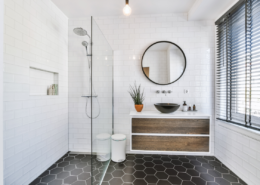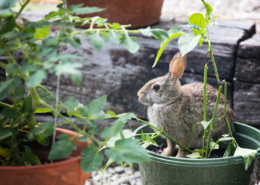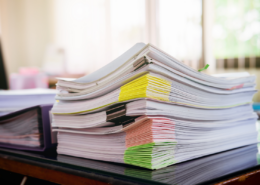How to Clean, Condition, and Maintain Leather Furniture
When it comes to furnishing your home, it’s difficult to find anything more luxurious and elegant than fine leather. With that elegance comes the challenge of how to clean leather furniture, keeping it free of stains, and well-maintained so that it gets even better with age.
Improper attempts to clean fine leather can result in the heartbreak of permanent damage. If your leather furniture is stained or looking a little on the tired side, follow these steps to perk it up.
Types of leather
To get started, determine the type of leather you’re working with. Typically, this information will be found on the attached tags or the brochure you were given when you acquired the leather item. This written information will generally provide tips on cleaning your specific furniture and should be your first line of defense.
What if you don’t have any instructions? Generally, when dealing with leather upholstery, there are two types: aniline leather and top-coated leather.
Aniline leather
This type of leather has been dyed with soluble dyes that are absorbed into the leather. The dye colors the leather without producing a heavy topcoat or sealant. Aniline leather has a very soft finish; supple, absorbent, and easily stains. Consider your leather piece extremely delicate.
If you are dealing with aniline, just one instruction: Do everything you can to keep it free of stains and spills. In an emergency, a clear, mild dishwashing detergent may safely remove a grease stain from this type of leather.
Top-coated leather
This is the most commonly used finishing technique for leather used to upholster furniture and automobile seats. The finish consists of an opaque base coat followed by a protective topcoat. Since the natural color of the leather is covered completely, the leather can be identified by its uniform color. Top-coat leather is known for its durability and protection from stains and spills.
Most leather furniture these days uses top-coat protected leather, which is usually safe to clean by following these guidelines:
Vacuum
You need to remove all the loose dirt, dust, and debris from the item to be cleaned. A vacuum with the soft brush attachment is the best option as it will get into the seams and crevices. Be gentle, though. Leather is delicate and you don’t want to scratch it as you are vacuuming.
Treat stains
Before you do a general cleaning, you want to treat and hopefully remove, any stains on the leather.
Ink stains
Dip a cotton swab in rubbing (isopropyl) alcohol and rub over the ink stain. Dry with a blow dryer set on its lowest setting.
Dark stains
For food, blood, or other dark stains (even those whose origin you’re not sure of) make a paste of one part Cream of Tartar with one part lemon juice. Rub this paste on the stain and allow it to sit for 10 minutes. Remove the paste with a damp rag and moisturizing soap (as described below) for general cleaning. Rinse, dry, and buff the leather dry with a soft cloth.
Grease stains
Apply a thick coating of white talcum powder to the surface of the stain. Allow it to sit overnight to draw the grease or oils from the leather. Gently wipe clean using a lint-free cloth or that handy vacuum.
Clean
Mix a few drops of a mild liquid facial cleanser or body wash such as OGX Argan Oil of Morocco Extra Hydrating Body Wash, Dove Relaxing Body Wash, or any shampoo that does not contain Sodium Laurel Sulfate (a harsh ingredient that could dry out the leather) with one quart of distilled water (chlorine and other contaminants in regular tap water can damage the surface of leather) until suds form.
Test
Using a soft white cloth, test this cleaner in an inconspicuous place on your leather item by scrubbing a small area. Observe to see how the leather responds.
Dive in
Assuming the test gives a good result, dip the clean, white soft cloth into the soapy water and wring it out thoroughly. Working on a small section at a time, wipe the leather surface with the damp rag.
Rinse
Dip another soft white rag into clean distilled water, wring it out thoroughly, then wiping away the soap residue.
Dry
Immediately, using yet another clean, soft white rag, dry the area.
Buff
With a fourth clean, soft white cloth, buff well to restore the luster.
Condition
Treat the surface with a non-toxic, high-quality leather protector/conditioner such as Obenauf’s Heavy Duty LP Leather Preservative, following the label instructions. Trust me, this stuff is awesome because not only does it rescue and restore the appearance of leather, it covers scratches, too!
Maintain
Going forward, be sure to clean spills immediately. I highly recomend KevianClean Leather Cleaner & Conditioner, Leather is porous. Assume that it will soak up just about anything.
Never use harsh cleaners or any kind of oil, furniture polish, baby wipes, household cleaners, or any product containing wax or silicone on your leather furniture. This could damage and/or leave the surface feeling sticky.
While you may be tempted, don’t use saddle soap, varnish, or any ammonia-based cleaners (like Windex) or bleach on leather furniture. Any or all of these methods could cause discoloration at the leas,t and serious damage at the most.
Position properly
To keep your fine leather furniture from fading, drying out or cracking, avoid placing it in direct sunlight. Keep it at least two feet from anything that produces heat like heating vents, fireplaces, radiators and also air-conditioning sources.
Test first, always
Again, be sure to always test any treatment in an inconspicuous area, especially with aniline. A clear, mild dishwashing detergent in an emergency may safely remove grease stains from leather.
Photo credit: ter-burg
Resources
Everyday Cheapskate participates in the Amazon Services LLC Associates Program, an affiliate advertising program designed to provide a means for us to earn from qualifying purchases, at no cost to you.
First published: 6-27-16; Revised & Updated 4-19-21
More from Everyday Cheapskate
Please keep your comments positive, encouraging, helpful, brief,
and on-topic in keeping with EC Commenting Guidelines
Last update on 2024-04-19 / Affiliate links / Images from Amazon Product Advertising API





















I proudly call myself a cheapskate. About 10 years ago, I was in the market for a new sofa, I priced leather sofas and about fainted. I was able to find a microfiber sofa (a floor model greatly reduced) that looks a lot like leather, but cleans up beautifully with just a wet cloth. Something to consider if someone is looking to buy or replace a leather sofa (although I understand they practically last forever!).
Yes, that suedel look!
What about a bedraggled , favorite leather purse?
Thank you very much for sharing this informative article with us. I loved this article.
I’m also wondering about scratches, etc. on my dark brown leather chairs & ottoman. Is there something to use where the color won’t come off on clothes?
What do you suugest to cover nicks in leather? I have a leather recliner and the foot rest has some of the color worn off in spots. Thank you.
Mary,
I have the suede coat that needs cleaning. In our area we only have one drycleaner’s, and they will not do suede coats. Our next closest drycleaner is 90 miles away and that’s not practical to go that route. Can you give me some guidance on how to clean my coat on my own? I am concerned about damaging one of my favorite coats. Help!!!
Side notes:
On my Keurig I make my first cup on regular and my second cup using the same single cup brew container a second time on strong to get more mileage from it.
I have not used shaving cream for 30 years plus. Somewhere way back I read a suggestion to use cream rinse instead. Also, I have discovered using shampoo works very well. They do not have a big lather look but work effectively. It takes such a small amount the savings are significant and makes one less item I must deal with in my sundries.
Thank you for your tips and many ideas.
Steve
I promise a post soon on self-cleaning suede. And for sure, you just might be a cheapskate!